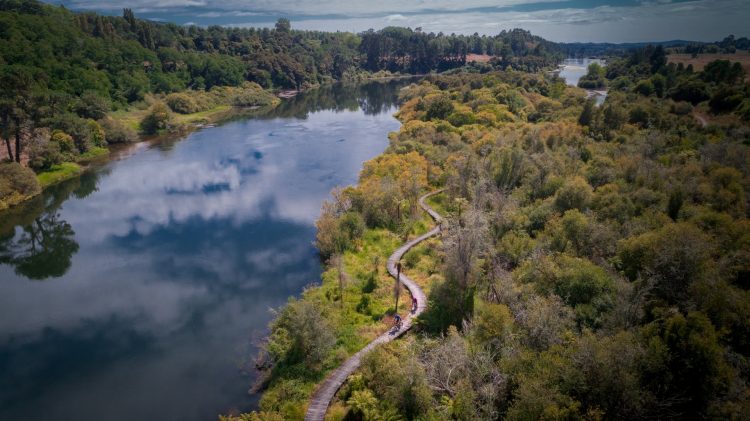와이카토 강은 뉴질랜드에서 가장 긴 강으로 인상적인 425km에 달합니다.
약 1800년 전 화산 폭발에 의해 형성된 화산 파편은 원래 수로를 막았고 강에서 서쪽과 북쪽으로 방향을 바꾸도록 강요했습니다.
와이카토 강은 타우포 호수에서 흐르는 중앙 북쪽 화산 지대에서 출발하여 후카 폭포를 만들고 와이카토 평야까지 이어져 마침내 포트 와이카토의 태즈먼 해로 비웁니다.
와이카토 강의 지류는 와이파 강이 합류하여 두 강을 나가루아와히아 근처에서 하나로 만듭니다.바다로 나갈 때 강은 그림 같은 풍경, 조류 생활, 산업 건축 및 기타 흥미로운 광경을 통과합니다.
영화 호빗 (Hobbit) – 스마우그의 황폐화, 타우포 근처의 아라티아 댐 (Aratiatia Dam) 은 ‘드워프 배럴’ 장면이 촬영된 장소를 개최합니다.댐으로 가는 문은 하루에 여러 번 열려 아라티아 래피즈의 가파른 협곡에 물을 쏟아 붓습니다.근처에 있으면 매우 시끄럽고 우스운 소리입니다!
‘와이카토’라는 이름은 마오리어에서 나온 것으로, 번역될 때 흐르는 물을 의미합니다.강은 투푸나 (조상), 타온가 (보물) 이며 타이누이 와카, 누이 투와레토아 등 다양한 이위의 영적인 의미를 지니고 있습니다.투랑가와에와에 마라에는 나가루아와히아의 와이카토 강 유역에 가깝습니다.
현지인과 방문객들은 와이카토 강을 헤엄 치고, 줄이 뜨거나, 떠 다니거나, 크루즈하는 모든 면에서 즐깁니다.젊은 인구에서 인기있는 여름 활동은 친구들과 함께 차가운 음료를 즐기고 숨막히는 경치를 즐기면서 휴식을 취하는 것입니다.
길이에 따라 길이와 강 트레일이 있어 걷기, 달리기, 자전거 타기 등 아름다움을 즐길 수 있습니다.
사이클을 즐기는 분들을 위해 마이티 와이카토 강 (Mighty Waikato River) 을 따라 사이클 트레일에 참여하여 변화하는 자연 경관과 수력 발전 댐을 둘러보세요.
가족 친화적이거나 편안한 주말 놀이기구에 더 많은 것을 원한다면 강 길을 걷거나 운전할 수 있습니다.
이 길은 해밀턴과 나루아와히아 또는 해밀턴과 캠브리지 사이를 쉽게 갈 수 있으며, 길을 따라 다양한 카페 중 한 곳에서 자신을 대접할 수 있습니다.




























































